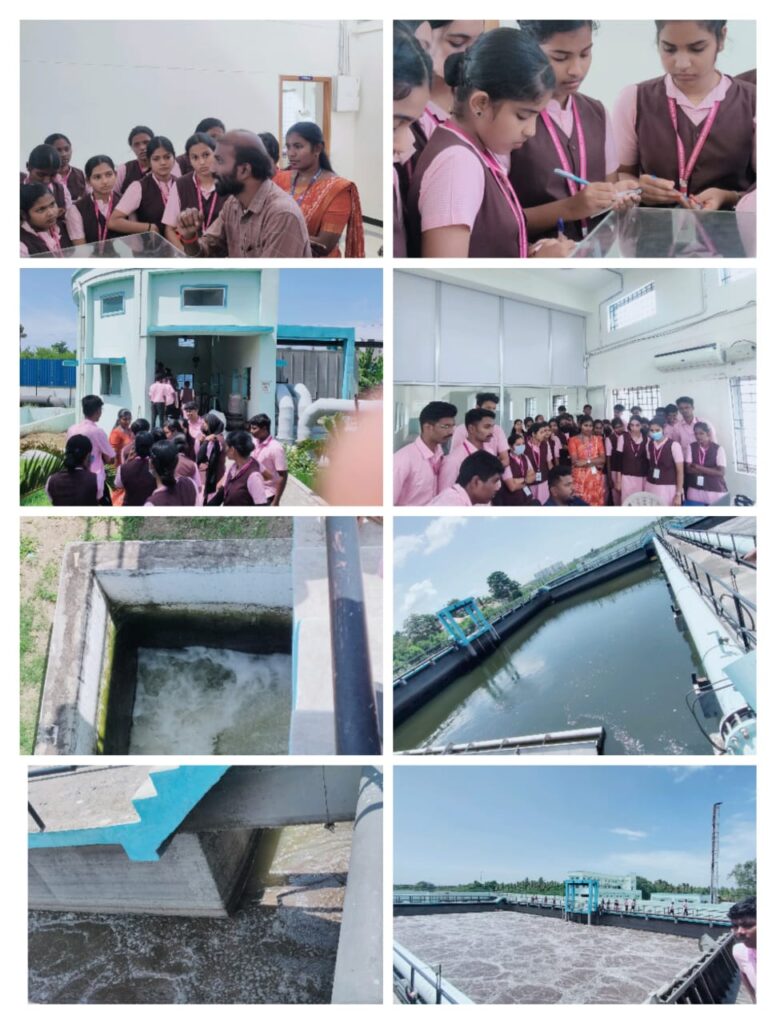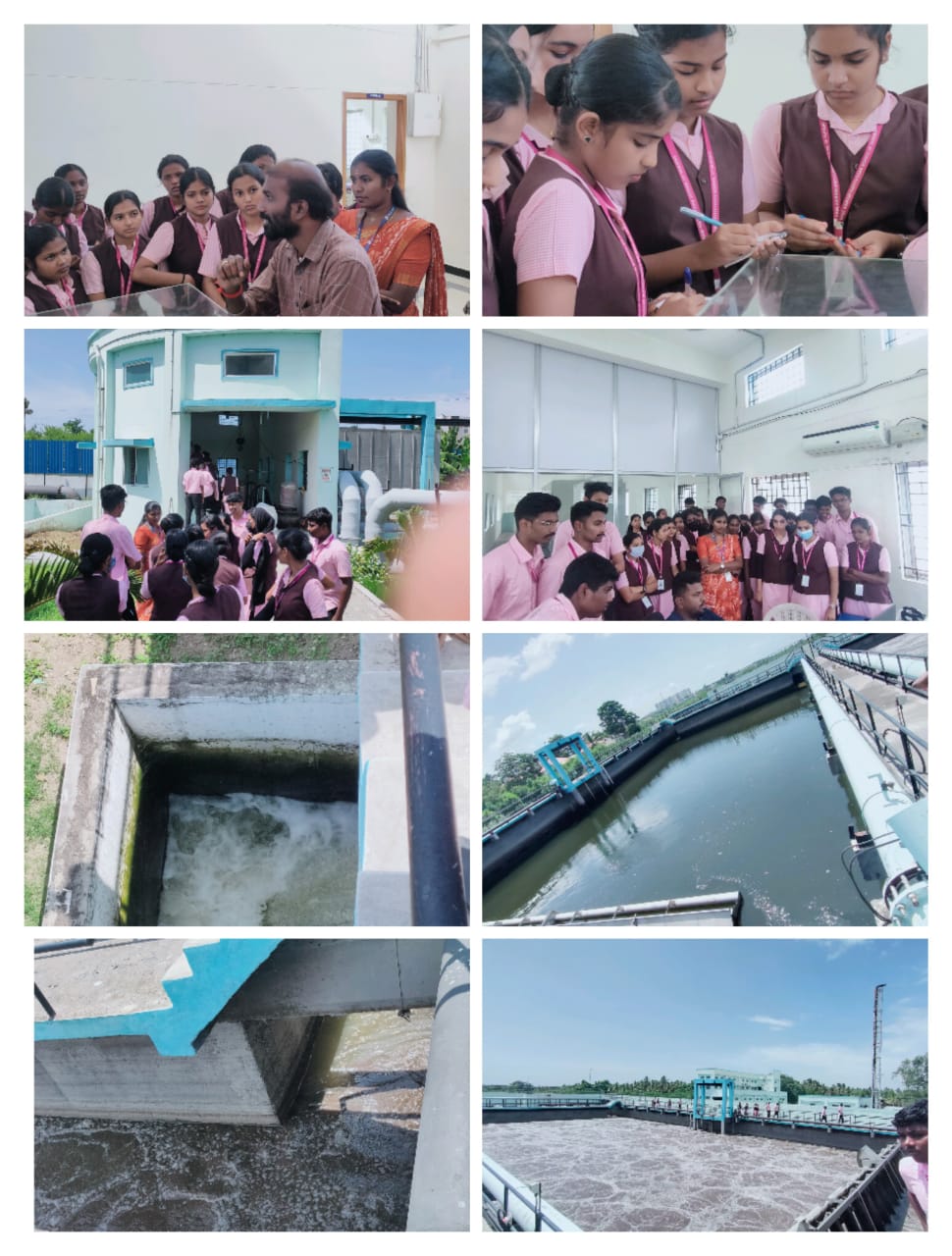
Educational Field Visit to Nanjundapuram Sewage Treatment Plant
Organized by Sree Abirami School of Nursing, Coimbatore
Date: 25th June 2025
In alignment with its mission to provide community-focused, experiential learning, Sree Abirami School of Nursing, Coimbatore, organized an educational field visit to the Nanjundapuram Sewage Treatment Plant (STP) on 25th June 2025. The visit aimed to expose first-year GNM students to the significance of wastewater management and its impact on environmental and public health.
A total of 35 students, accompanied by faculty members, participated in the visit. The team arrived at the plant at 10:00 AM after obtaining official permission, and they were warmly received by the plant staff. The visit began with a detailed orientation session by the plant officer, who introduced the students to the objectives and functioning of a modern sewage treatment plant.
The officer explained that a sewage treatment plant is a facility that removes harmful contaminants from household sewage and wastewater before it is safely discharged into the environment or reused. The treatment process integrates physical, chemical, and biological methods to eliminate pathogens, organic matter, and pollutants, thereby playing a critical role in maintaining environmental balance, public hygiene, and sustainable urban living.
The students were guided through each stage of the sewage treatment process, gaining a step-by-step understanding of how raw sewage is transformed into safe, treated water.
The tour began at the screening chamber, where large solid waste such as plastics, rags, and debris is removed. This was followed by the grit removal stage, where sand and heavier particles settle at the bottom. Students observed how primary sedimentation tanks collect sludge, and how the remaining water is sent to the aeration tanks, where oxygen is pumped in to support the growth of beneficial bacteria that digest organic matter.
The secondary clarifier was the next stage, where the sludge is separated and either recycled or removed. The process concluded with disinfection, which involves the use of chlorine or ultraviolet treatment to destroy any remaining pathogens. Students also learned about sludge management, where waste solids are treated for safe disposal or converted into compost or energy.
In addition to the technical aspects, the plant staff also addressed the broader significance of environmental sustainability and water safety. They discussed how untreated sewage can lead to contamination of natural water sources, cause disease outbreaks, and harm ecosystems. The session emphasized the need for effective waste management systems in growing urban populations and the importance of interdisciplinary collaboration between engineers, health professionals, and environmentalists.
A key takeaway from the session was the role of nursing professionals in community health. Nurses are often frontline educators when it comes to hygiene practices, disease prevention, and sanitation awareness. The staff encouraged students to not only apply their technical knowledge in clinical settings but also take an active role in health education and environmental advocacy within their communities.
The students engaged actively throughout the visit, asking questions and showing interest in how scientific waste management protects health. They appreciated the opportunity to see real-time applications of concepts learned in the classroom and recognized the connection between public sanitation systems and their own future responsibilities in public health nursing.
This visit to the Nanjundapuram Sewage Treatment Plant provided an eye-opening, practical learning experience. It helped students understand that health doesn’t begin in hospitals—it begins with clean water, safe waste disposal, and a hygienic environment.
By blending academic knowledge with real-world exposure, Sree Abirami School of Nursing once again reaffirmed its dedication to nurturing informed, responsible, and community-conscious healthcare professionals. The field visit stood as a reminder that protecting public health goes hand-in-hand with protecting our environment.
